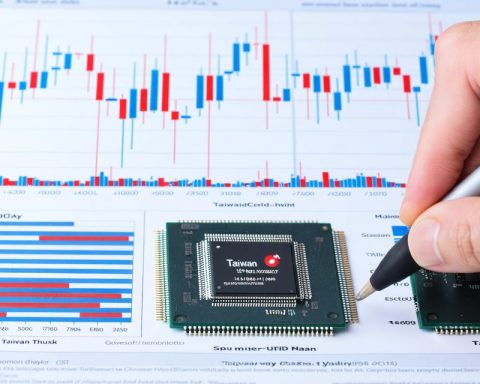- DeepSeek, a Chinese AI startup, is creating waves by open-sourcing significant elements of its AI models, emphasizing transparency and community involvement.
- The company plans to release five code repositories, inviting global developers to contribute, enhancing the AI models further.
- DeepSeek’s decision to open-source deviates from typical corporate secrecy, offering a peek into their V3 and R1 models and accelerating collaborative innovation.
- This approach contrasts with typical tech industry practices, challenging the status quo and highlighting the potential of shared wisdom.
- While Salesforce retains attention with its AI advancements, DeepSeek’s innovative, open culture makes it a notable player in the AI landscape.
A groundswell of excitement surrounds DeepSeek, a Chinese AI startup making bold strides in the tech landscape. With an audacious announcement, the company reveals plans to open-source significant elements of its AI models. In an industry accustomed to closed-doors and proprietary secrets, DeepSeek’s decision illuminates a path less traveled, prioritizing transparency and community over confidentiality.
On the social platform X, DeepSeek signals that its dedicated, albeit small, team is ready to unleash five code repositories. These will not only demystify their AI engines but also invite the global developer community to contribute, tweak, and enhance the technology. Boldly attributing their achievements to a spirit of openness, the young company insists these actions embody a sincere step toward progress.
Deviating from typical corporate secrecy, the move to render their V3 and R1 models open-source has catapulted DeepSeek toward rapid ascent. This openness, offering everyone a peek under the hood, heralds a dynamic era of collaborative innovation where lines of code become collective milestones.
Amidst this backdrop, Salesforce still draws investor eyes with its AI advancements. While Salesforce’s CEO dispels rumors about its AI workload partnerships, the company continues to expand its cloud offerings, holding strong in the AI stock arena.
Yet, it’s DeepSeek’s garage-like ethos and community-centric approach that challenges the status quo. Eschewing the ivory towers of tech elitism, DeepSeek champions the power of shared wisdom as a cultural movement, rather than a commercial strategy. As lines of code join the global dialogue, the company’s bold steps underscore the potency of collaborative progress in accelerating AI innovation for all.
Revolutionizing AI: How DeepSeek’s Open-Source Initiative Could Transform the Tech Landscape
Introduction
DeepSeek, a burgeoning Chinese AI startup, has disrupted the traditionally secretive AI industry by open-sourcing key components of its AI models. This innovative approach not only enhances transparency but also fosters global collaboration. In an industry where proprietary secrets often dominate, DeepSeek’s strategy challenges the norm and aligns itself with community-centric innovation. Yet, numerous questions and considerations arise for potential users and developers. This article delves into unexplored facets of DeepSeek’s approach, offering insights into its implications for the AI landscape.
How-To Steps & Life Hacks: Engaging with Open Source AI
1. Access the Repositories: To engage with DeepSeek’s open-source models, start by visiting GitHub or equivalent platforms where the repositories are hosted.
2. Install Necessary Tools: Make sure you have the required tools and libraries installed. For AI models, common requirements include Python, TensorFlow or PyTorch, and supporting libraries.
3. Explore the Documentation: Thoroughly review the provided documentation and README files. These documents will often contain instructions on how to set up and interact with the models.
4. Experiment and Contribute: Test the models, experiment with different parameters, and observe the outputs. Contribute by submitting improvements, bug fixes, or enhancements through pull requests.
5. Join the Community: Get involved in discussion forums or follow DeepSeek on social media platforms to stay updated and network with other developers.
Real-World Use Cases
DeepSeek’s models can be applied across various sectors:
– Healthcare: Utilizing AI for early diagnosis and predictive analytics.
– Finance: Implementing models for fraud detection and algorithmic trading.
– Retail: Enhancing recommendation engines and customer personalization.
Market Forecasts & Industry Trends
The open-source AI market is projected to witness substantial growth, as more companies realize the cumulative benefits of shared knowledge. According to a Market Research Future report, the AI market is expected to grow from $62.35 billion in 2020 to $930.72 billion by 2028. Open-source contributions, like those by DeepSeek, are anticipated to drive innovation and adoption rates.
Reviews & Comparisons
Comparison with other industry players shows:
– DeepSeek vs. Traditional Firms: Whereas companies like Salesforce prioritize proprietary models, DeepSeek’s transparency accelerates community-driven progress.
– DeepSeek vs. OpenAI: While both leverage open-source strategies, DeepSeek is distinguished by its grassroots approach, aiming for broad accessibility and engagement.
Controversies & Limitations
The open-source model isn’t without challenges:
– Intellectual Property Concerns: Contributors need to be wary of IP theft or misuse.
– Security Risks: Open-source models may be vulnerable to exploitation if not properly vetted.
Features, Specs & Pricing
DeepSeek’s models offer:
– Modular Architecture: Facilitating integration and customization.
– Scalable Solutions: Designed to handle various operational scales.
– Cost-Effective: Significant savings due to free access to core components.
Security & Sustainability
DeepSeek prioritizes sustainability and security by:
– Conducting regular audits to thwart vulnerabilities.
– Promoting sustainable coding practices in their community guidelines.
Insights & Predictions
Experts predict that DeepSeek’s bold move may inspire other startups and established firms to adopt open-source practices, fostering a more collaborative and transparent AI industry.
Pros & Cons Overview
Pros:
– Enhanced transparency and trust.
– Rapid pace of innovation through community contributions.
Cons:
– Potential risks of misuse or ethical concerns.
– Quality control challenges with widespread contributions.
Actionable Recommendations
– Stay Updated: Regularly check DeepSeek’s social channels for updates on new releases and developments.
– Contribute Actively: Engaging with open-source projects not only enhances personal skill sets but also supports community growth.
– Evaluate Use Cases: Before implementing any AI model, assess its applicability and impact on your specific needs.
DeepSeek’s move to open-source signifies a potential pivot in the AI field. As lines of code turn into collective milestones, the global developer community stands at the forefront of pioneering AI advancements.
For more resources, visit the official site: Salesforce.

















